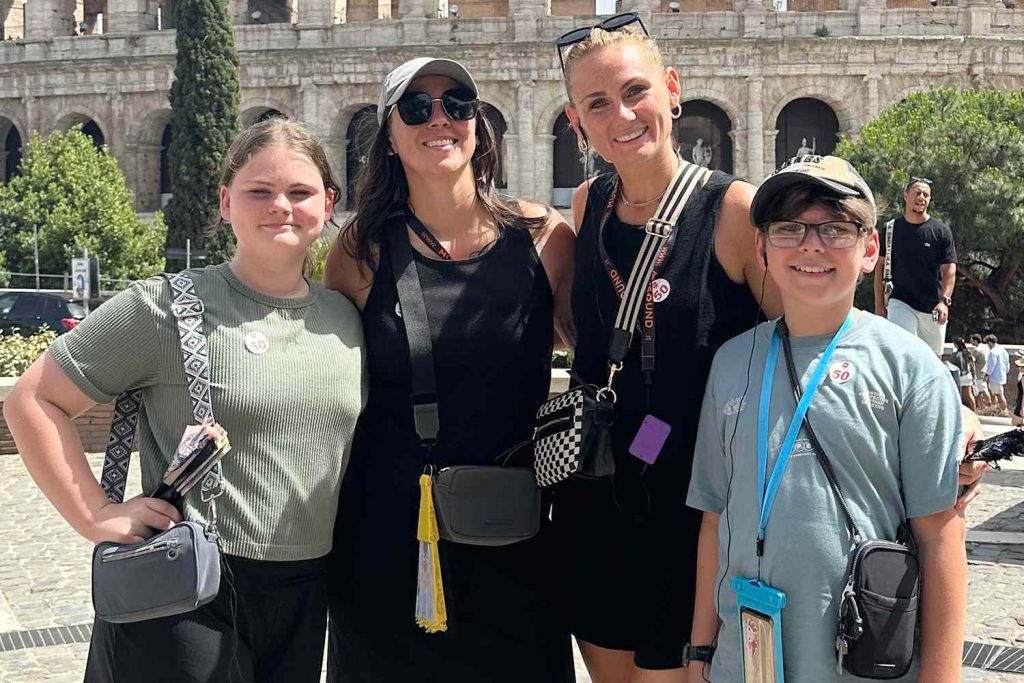:max_bytes(150000):strip_icc():format(jpeg)/jessica-roderick-grace-Brittanie-Benavidez-tj-080725-737759e0495a45b9810e1b9d037eea31.jpg)
NEED TO KNOW
- Jessica Roderick gives each of her three children a quarterly allowance
- Around back-to-school time, she raises their allowance to $750 to account for clothing and supplies
- She explains to PEOPLE how teaching financial responsibility from a young age has affected the way her teens spend money
When Jessica Roderick’s youngest child turned 7, she began giving each of her three children a quarterly allowance of $500 — a bold parenting move aimed at teaching financial responsibility.
Now, with back-to-school season underway, the 38-year-old from Tampa, Fla., gives each of them $750 to buy their own supplies, clothes, and other essentials, with minimal restrictions.
Using a kid-friendly debit card and beginner investment tools, the children are learning to track their spending and explore the basics of saving and investing.
Roderick tells PEOPLE her goal is to help them build confidence with money and develop strong budgeting habits that will serve them well into adulthood.
“My initial goal, that I think any parent could achieve, is teaching them the value of what things cost and how to use money responsibly,” Roderick says. “There’s no such thing as unlimited money. Having them learn that at a young age was something I really wanted them to understand.”
To achieve this, the mother of three discovered a debit card called Greenlight, which offers kids an easy way to spend and track their money.
Recognizing that many schools fall short in teaching practical money management, she believes the key to future success is starting early – and at home.
“I wanted to teach them as much about money as I could while they are younger, so finances aren’t overwhelming when they become adults or even when they get their first job,” Roderick explains.
She started seeing the difference in how her children manage their money almost immediately after they were trusted with an allowance and given freedom to make their own mistakes.
“It’s like day and night since they first started,” she reveals. “They will be at the store and actually look at prices of things, even if they aren’t buying it, and will even make comments about it being expensive or a good deal because they are just used to checking prices now.”
As this essential skill becomes second nature, Roderick says she places few restrictions on how they spend and sees the allowance as “their money” to manage and learn from.
Her only request before the school year begins is that they pick clothing that meets school guidelines and ensure they have enough outfits to last at least 10 days.
Never miss a story — sign up for PEOPLE’s free daily newsletter to stay up-to-date on the best of what PEOPLE has to offer, from celebrity news to compelling human interest stories.
Roderick explains that while she covers essential items – such as clothing, shoes, and hygiene products – when truly necessary, there are consequences for poor budgeting.
“If they run out of soap, of course I’ll get them more,” she says, but emphasized that when it comes to non-essentials, the lesson is clear: “If it’s something they don’t need like a soda from the gas station, if they didn’t plan on saving money for that, they just know to do better next time and not buy one.”
To her, the lesson reflects real-world responsibility: when money runs out, you go without certain commodities – just like adults, but with less at stake.
When asked when she would stop providing her kids with an allowance, she revealed that she plans to continue until they turn 18, even if they start making their own money as young teenagers.
Roderick believes that any additional money they earn is a bonus, further developing their money management skills.
“If they are working hard for extra money, they just get the benefits of earning extra money,” she says. “They get to choose how to spend it, save it, or invest it.”
In the end, she wants her children to be confident about learning about money, emphasizing that “being an adult already comes with so many challenges, financial problems don’t need to be added to that.”
She stresses that because money management is not typically taught in schools, “most people learn basic money skills when they are thrown into it and more is at stake.”
Roderick’s goal is for them to “know how to work hard for money, learn to make a budget and learn to save money.”

